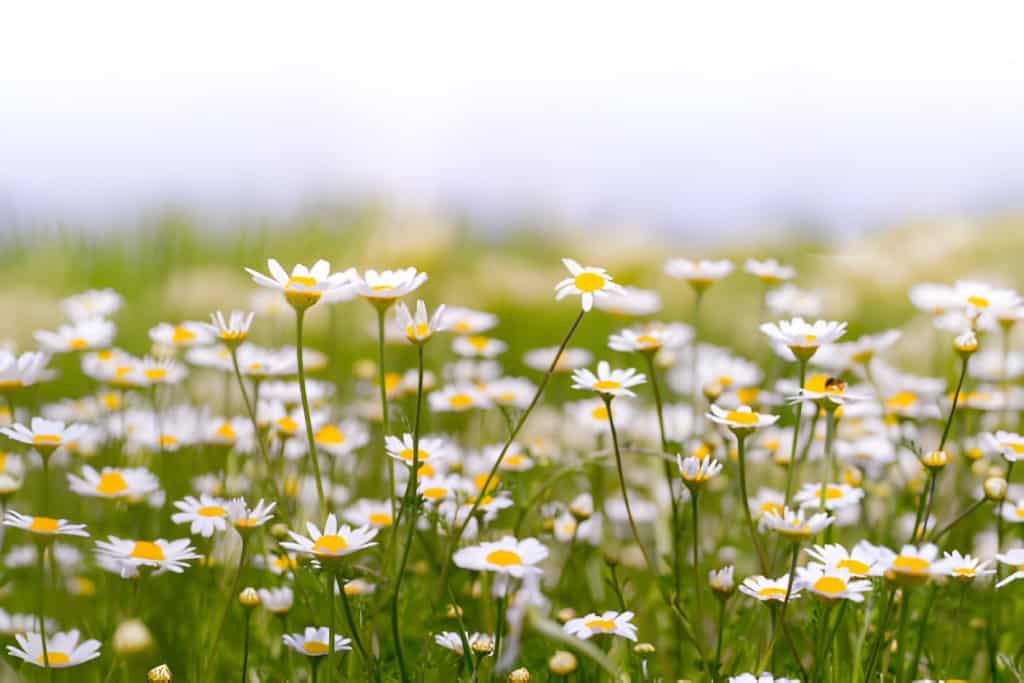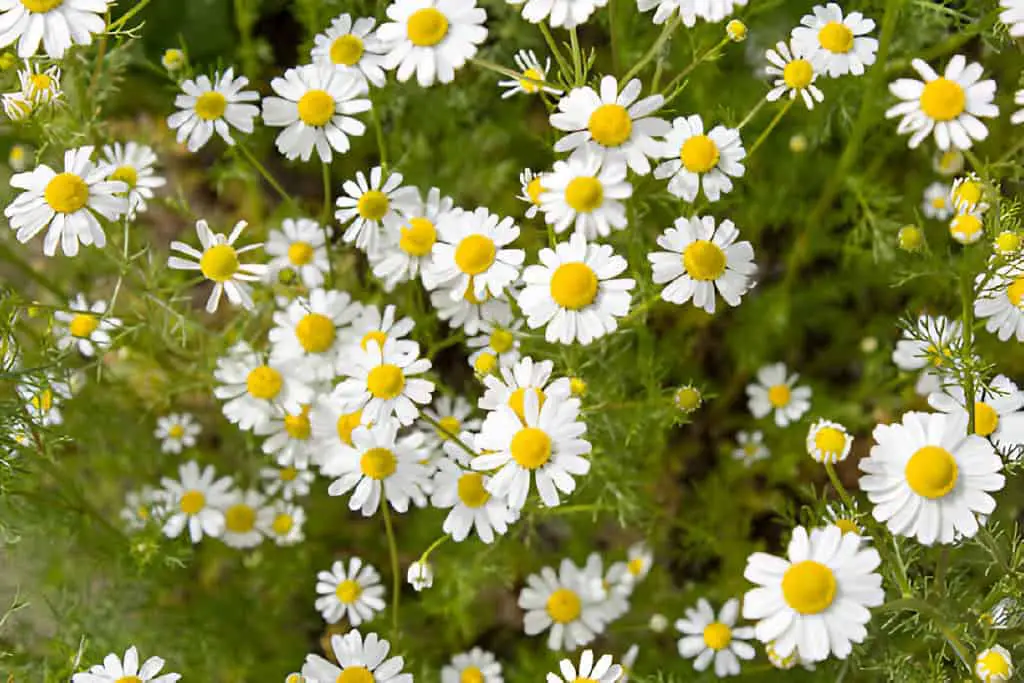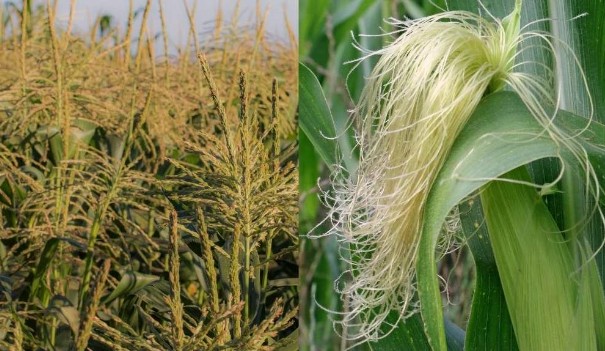How To Prune Chamomile Plant: Step By Step Trimming Guide

Chamomile, with its delicate, daisy-like flowers and fragrant aroma, is a beloved addition to any garden. Pruning chamomile not only helps maintain its shape and health but also encourages more robust flowering.
Pruning chamomile plants can seem hard. But, it’s a key task for gardeners who want to keep these delicate, fragrant herbs thriving. Have you ever wondered how to keep your chamomile lush and blooming all season?
This guide will walk you through the steps to prune your chamomile plant well. This will ensure that it thrives and brings beauty to your garden. Learn the proper chamomile pruning techniques. They will boost the plant’s growth and flowering. They will also lengthen its life and productivity.
Understanding Chamomile

Chamomile comes in two primary varieties: German chamomile (Matricaria chamomilla) and Roman chamomile (Chamaemelum nobile). German chamomile is an annual, growing up to 24 inches tall, while Roman chamomile is a perennial, typically reaching 12 inches. Both types benefit from regular pruning to promote growth and prolong blooming periods.
Why Pruning is Important
Pruning is vital for chamomile plants because it:
- Encourages new growth
- Prevents legginess
- Extends the blooming season
- Improves plant health by removing dead or diseased parts
When to Prune Chamomile (Pruning Seasons)
Chamomile plants need regular pruning. This keeps their shape, helps new growth, and makes flowering last. The timing of pruning can vary based on whether you are growing annual or perennial chamomile:
- Annual Chamomile (German Chamomile): For annual chamomile like German chamomile, pruning is done after the plant has finished blooming. This happens in late summer or early fall. This helps tidy up the plant and encourages a fresh flush of growth before winter dormancy.
- Perennial Chamomile (Roman Chamomile): Perennial chamomile, such as Roman chamomile, may be pruned throughout the growing season to maintain its appearance and prevent it from becoming too leggy. Prune lightly after each bloom. This can keep blooms coming and stop the plant from becoming woody.
Factors Influencing Pruning Time
- Climate: In warmer climates, chamomile may continue to bloom into late fall, so pruning can be delayed until after the last blooms fade. In colder regions, pruning before winter sets in helps protect the plant from frost damage.
- Plant Condition: Your chamomile plant may look overgrown or have sparse foliage. Pruning can help by stimulating new growth from the base.
Timing is crucial for effective pruning. The best times to prune chamomile are:
- Early Spring: Before new growth begins
- After the First Bloom: To encourage a second flowering
- Late Fall: To prepare the plant for winter dormancy
Tools You Will Need to Prune
Before you start pruning, gather the necessary tools:
- Sharp, clean pruning shears
- A pair of gardening gloves
- A small rake or hand cultivator
- A compost bin or bag for plant debris
| Also read: How To Prune Broom Plant: Step By Step Trimming Guide |
How To Prune Chamomile Plant (Step-by-Step Guide)
1. Early Spring Pruning
Objective: Stimulate new growth and shape the plant.
- Inspect the Plant: Check for any signs of disease or damage.
- Remove Dead Growth: Trim away any dead or damaged stems to prevent disease.
- Shape the Plant: Cut back overgrown stems to maintain a compact shape.
- Dispose of Debris: Place all cuttings into the compost bin.
Tips: Be gentle with young plants. Use clean shears to avoid spreading disease.
2. Pruning After the First Bloom
Objective: Encourage a second round of blooming.
- Deadhead Spent Flowers: Remove faded blooms to direct the plant’s energy towards new growth.
- Trim Overgrown Stems: Cut back any leggy or sprawling stems to encourage bushier growth.
- Inspect for Pests: Check for insects or disease and address any issues promptly.
- Water and Fertilize: After pruning, water the plant and consider a light feeding with balanced fertilizer.
Tips: Prune on a dry day to minimize the risk of fungal infection. Avoid heavy pruning, as it can stress the plant.
3. Late Fall Pruning
Objective: Prepare the plant for winter dormancy.
- Cut Back: Trim the plant to about one-third of its height. This helps it conserve energy during the cold months.
- Remove Debris: Clear away fallen leaves and plant material around the base to prevent pests and disease.
- Mulch: Apply a layer of mulch around the base to protect the roots from freezing temperatures.
Tips: Be mindful not to prune too late in the season, as the plant needs time to heal before the first frost.
Table: Chamomile Pruning Schedule
| Season | Pruning Activity | Purpose |
| Early Spring | Remove dead growth, shape the plant | Stimulate new growth and maintain shape |
| After Bloom | Deadhead, trim overgrown stems | Encourage second blooms and prevent legginess |
| Late Fall | Cut back, remove debris, and mulch | Prepare for winter dormancy |
Common Pruning Mistakes to Avoid
- Over-Pruning: Cutting back too much can stress the plant.
- Pruning at the Wrong Time: Pruning too late in fall or during mid-summer heat can harm the plant.
- Using Dirty Tools: Unclean shears can spread disease.
Caring for Your Pruned Chamomile
After pruning, chamomile requires care to recover and thrive. Here are some tips:
- Watering: Keep the soil moist but not waterlogged.
- Fertilizing: Use a balanced fertilizer to support growth.
- Pest Control: Regularly check for pests and treat as needed.
Benefits of Proper Pruning
Pruning chamomile correctly leads to several benefits:
- Healthier Plants: Removing diseased or dead parts promotes overall health.
- Extended Blooming Season: Regular pruning encourages continuous flowering.
- Aesthetics: Well-pruned plants look neater and more attractive.
| Read: How to Trim Hoya Plant |
How Often Should I Prune My Chamomile Plant?
Deciding how often to prune your chamomile plant is vital. It keeps the plant healthy and promotes strong growth in the growing season. Here’s a comprehensive guide to help you understand the frequency and best practices for pruning chamomile:
Factors Influencing Pruning Frequency:
- Growth Rate: Chamomile plants vary in their growth rates based on factors like variety, soil conditions, and climate. Chamomile typically grows fast in spring and summer. You need to prune it a lot to keep it tidy and encourage blooming.
- Blooming Cycle: Chamomile plants produce abundant flowers during their blooming season. Regular deadheading means removing spent flowers. It encourages the plant to put its energy into making new blooms. This extends the flowering period.
Best Practices for Pruning Chamomile:
- Deadheading: Remove faded flowers regularly to prevent the plant from going to seed prematurely. This practice not only prolongs the blooming season but also helps maintain the plant’s appearance.
- Light Pruning: Throughout the growing season, lightly trim the chamomile plant to promote bushier growth and prevent it from becoming leggy. Focus on cutting back any overly long stems or branches.
- Seasonal Pruning: In late summer or early fall, after the main blooming period, give your chamomile plant a more thorough pruning session. This helps tidy up the plant and prepares it for the winter months ahead.
Practical Tips for Pruning:
- Use clean, sharp scissors or pruning shears to make precise cuts and minimize stress on the plant.
- Avoid cutting into the woody base of the plant excessively, as this can hinder future growth.
- After pruning, use a balanced fertilizer. It will support the plant’s nutrients and encourage healthy regrowth.
Conclusion
Pruning chamomile is a simple yet essential task for maintaining a healthy and vibrant garden. Follow this step-by-step guide. It will help your chamomile plants stay strong. They will bloom beautifully and keep bringing joy to your outdoor space. Happy gardening!
FAQs About Pruning Chamomile
Can I use the pruned parts of the chamomile plant?
Yes, you can dry the flowers and leaves for tea or other herbal uses.
How often should I prune chamomile?
Prune lightly throughout the growing season and more thoroughly during early spring and late fall.
What should I do if my chamomile plant looks leggy?
Prune back the overgrown stems and provide adequate sunlight.






